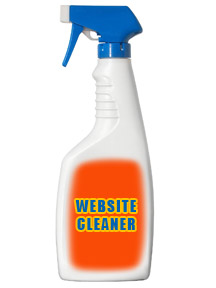If you’re in the small business realm, you know just how important having a well-designed, consumer-friendly website can be. The hard part is knowing what small business website design techniques are going to get you the most business. It’s one thing to have a great website, but it’s another to have one that works well for small business sales. Let’s look at a few, good methods you can implement into your business to make sure you’re taking care of the customers.
There is an unusual acronym to remember some great ways to keep your customers in mind while constructing/updating your small business website: CRAP
Consistency: Common flow/feel as visitors browse your website
Repetition: Use appropriate repetition of imagery and text throughout
Alignment: A place for everything, and everything in its place. Don’t stick anything on the website for the reason of just “having it on there.”
Proximity: Make sure you group appropriate parts of your website together. Can your clients find what they need, easily?
Color is an important aspect of your small business design. Although consistency is important, choosing the right colors are a must to help you get the sale. Customers shop with their eyes; use colors that complement each other. You want them to be agreeable with the nature of the website, but not overwhelmingly bright or annoying to look at. You also don’t want a bland color palate. Try to pick one bold color, keeping the contrasting colors more neutral.
Advertising
Many small business websites have advertising space they can control. You really want to make sure that any advertising you have on your website is relevant to your small business. If you sell handbags, your best advertising would also be in accessories, clothing, cosmetics and so on. If you have a family member who has a tree stump removal business, they have no purpose on your website, family or not.
Finally, your patrons want to know what’s in it for them. Save a webpage to talk about you and your business; leave the rest to cater to the shopper. Talk about what they’re going to get when they do business with you. Make sure to mention everything from a detailed description of the product or service, right down to your mission statement, guarantees and return policies.
As much as we may pride ourselves on the time and love we spend on our small businesses, we have to remember that the consumer tends to be a bit more “selfish.” Their concern is a getting a great deal on a product or service on a website that’s easy to use and good-looking. Remember: If you don’t take care of your customers…someone else will.


